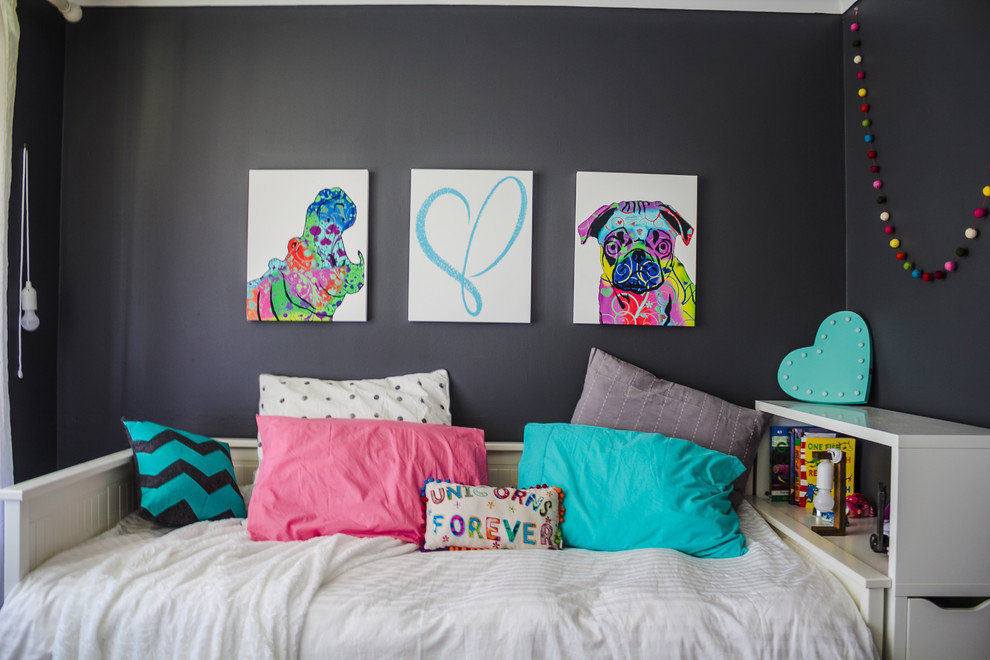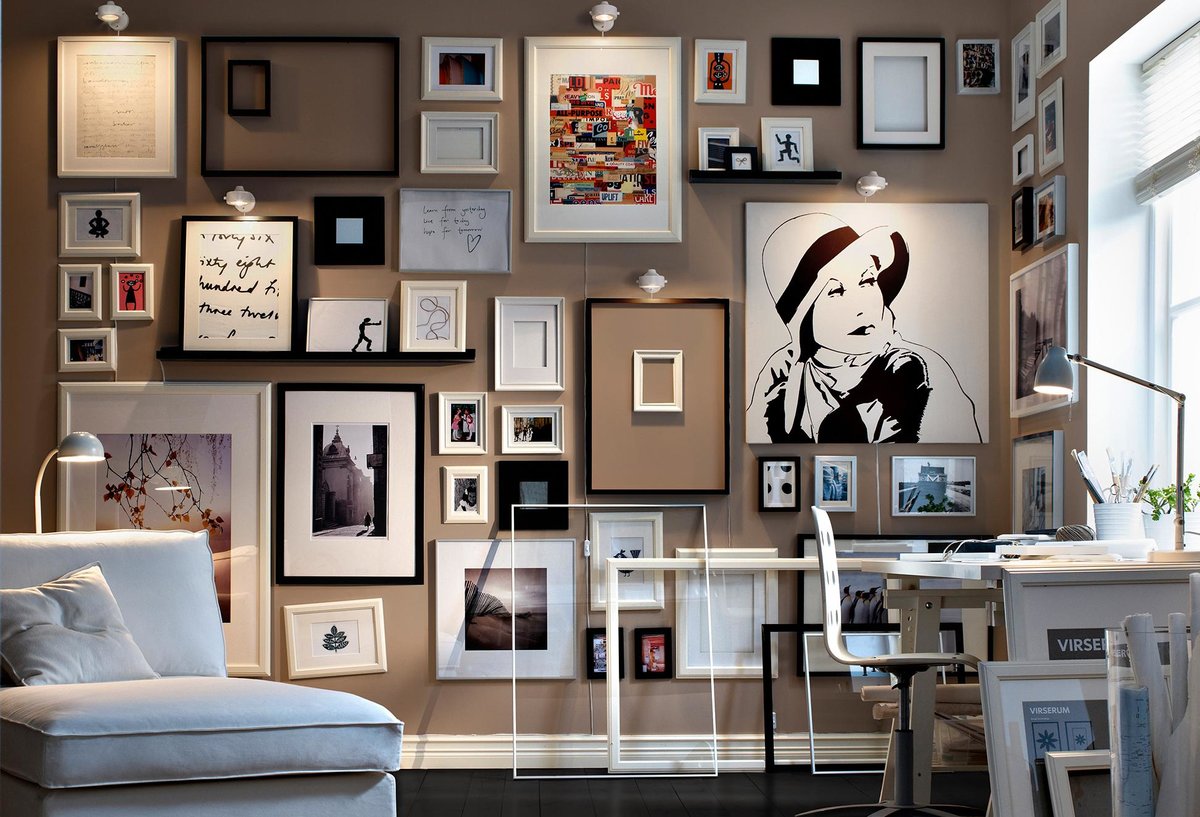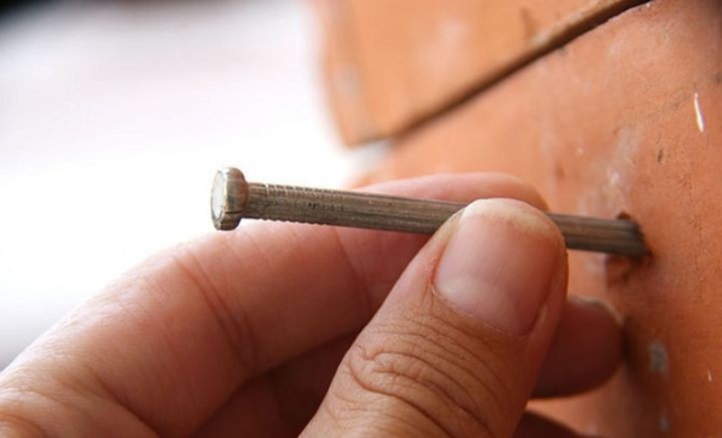How to hang a painting on the wall
A question that can be answered in one sentence: "how to hang a picture?" "Yes, easy, you need to take nails and nail the canvas in the center" - most people will answer. And in the end, they will look for how to fix their efforts.

- What are paintings in the house for?
- How to hang a picture correctly (what is needed for this + principles of placing pictures in the house)
- Options for attaching paintings to the wall without nails
- Mounting methods depending on the wall material
- How to hang a heavy painting on a wall
- Video: how to hang a painting on the wall
What are paintings in the house for?
Correctly selected accessories in clothes create an incredibly attractive image. One detail changes the overall look and mood of the sight seen. The same happens with interior design. If every detail complements the overall picture, it becomes a pleasure to be in this place. The beautifully decorated interior will add coziness for the owner of the house, and his guests will appreciate the good taste of the owner of the house.

Pictures in the room are with a person throughout his life. For a child, parents try to choose light wallpapers and hang pictures or photographs that are pleasant to the child's eyes. For a teenager, this is one way to loudly announce their musical or cinematic tastes - by hanging a poster.

For an adult, the opportunity to decorate the area with the same missing detail. One painting can create a general mood for a room. If it is an image of food posted in the kitchen, but promotes better food intake: it induces appetite.

How to hang a picture correctly (what is needed for this + principles of placing pictures in the house)
How to hang a picture so as not to spoil either the picture or the wall? What does that require? How do you learn to place the decor so that the design will only benefit from it? All these questions have their own answers. They will not be able to fit into one sentence, but it is worth preparing first, so that later you do not look for ways to fix what was done.

Since designs and tastes are different, there is no one-size-fits-all advice on where to place a painting. Start your work by deciding where you want her to decorate the room. When doing this, consider:
- The size of the painting.
- The height of the ceiling of the room.
- Lighting.
- Line of sight.
Please note that paintings that are large in size will be appropriate to place on a wall with a large area, and small ones on a small one. Consider this fact of relevance, even at the stage of purchasing an accessory in a store. Take into account the geometry of the room, it is better to place a horizontal picture on a long wall, and a vertical one on a high one.

The picture format has good visual features. By hanging a row of paintings in one vertical line, you can visually lengthen the wall. If you have chosen a place where you want the selected image to hang and the center of this image is at your eye level. It means that you are doing everything right.

The order in the apartment should have been visible on everything: both in cleanliness and in aesthetics. Hang the pictures up to the same level.

Options for attaching paintings to the wall without nails
It often happens that when there is one thing, there is no second, and then vice versa. So, when you want to assign your picture to its place, where it will hang, and not gather dust on the shelf, it turns out that there is now a nail or a hammer.
A creative person knows more than one fastening of paintings to the wall without drilling. Pay attention to the subtleties of completing each task in order to correctly and aesthetically bring your plans to life.

Tailor's pin
Creativity in the case of a tailor's pin is appropriate if the weight of the picture does not exceed half a kilo. This method clings to: painting, small products and photography.
Consider what kind of coating is on the wall - paint or wallpaper. In the case of paint, you will need to take a small piece of paper, glue it to the wall and stick a pin into it.
In the case of both, everything happens exactly the same. Thin or loose-fitting paper is an exception. Attach the painting to the place where you will place it, circle it with a pencil or chalk. Cut it out. Pick up a thick piece of paper of the size you cut, glue and secure the pin. Ready.

Double sided tape
Easy and reusable fastening method. Allowable weight for paintings: up to 2 kilograms. Glue exactly the scotch tape in the place where you will place your work and attach a picture to them. The positive side of the method: lightness, the ability to apply on plasterboard walls and light wallpaper. Negative side: when there is a desire to change the place for the picture or take it away altogether, traces of scotch tape will remain in the place of the picture.

Paper clip
The attachment will be the same as with the pin. Use a pair of tongs to bite off some of the paperclip so that the ends become sharp and stick it into the wall, wallpaper, or a piece of heavy paper. The experiment showed that the paper clip can withstand the weight of the picture up to 1 kilogram.

Spider hook
Not a handy method, but a good alternative to nails. Buy a spider hook from a hardware store. Pros: easy to attach, practically leaves no traces of attachment, for attaching paintings up to two kilograms. The attachment of such a spider is done with a hammer, a light blow, the hook is fixed in the wall with its four pointed ends.

Velcro
They have a large selection of varieties. Basically it is a set of small sticky strips. Technique: one strip is glued to the frame of the picture, the second to the wall. Permissible weight: up to 2 kg. The more such mounts, the more weight they can hold.

Cork
Option for small and medium wall paintings without drilling is possible. After the holiday, save the wine cork or remove it from your collection, if you have a similar one. Cut and glue with super glue (preferably quick-drying) to the wall.At this point, you can fix the fasteners.

Cornice rail
A similar way can be seen in art galleries. At home, take an old cornice. You can also use a wooden strip, only you will need to attach hooks to it, like on a cornice. Pictures are hung to these hooks on a fishing line or loops.

Liquid Nails
The material allows you to mount non-massive paintings without nails. The appearance of liquid nails with metal ones has nothing in common. They are more like superglue. Actions are performed in the same way. We cover the frame with glue and apply it to the wall. Pay attention to the evenness of the placement of the painting.

Mounting methods depending on the wall material
We nail the nail at an angle and hang the picture. The simplest and most common right for everyone. Pay attention to the features of the walls in order to avoid oversights and spend more time eliminating unpleasant consequences.
Wooden walls
When working on this material, the metal comes in smoothly and easily. Even if there is plaster on top. For fasteners, you can use a nail for the weight of the painting or a screw. In the case of a screw, for accurate work, you can first make a hole, insert a screw with a "L" -shaped shape.

Concrete walls
The concrete version of the wall has a high level of difficulty. From the tools you will need: a perforator or bolt. A plastic dowel must be inserted into the extended hole and only then the bolt hook must be screwed in.
For massive paintings, use a expansion anchor. The length of such a tube is about 5 cm, inside you can insert a hook, or a bolt that can be tightened with a screwdriver. At the moment when you twist, for example, a hook, it will expand the anchor (tube) and fix it in the wall.

Brick walls
What to hang a picture on a brick wall:
- Hot carnation.
- Expansion anchor.
- Dowel.
You can drive a carnation into the wall with a hammer or a nail gun. Making a hole with a drill in a brick wall is easier.

Plasterboard walls
The difficulty of fastening is created by a plasterboard wall in that the wall material is fragile. It will be especially difficult if you need to attach a massive image. Tools for different paintings:
- Special anchors for solid.
- Plastic stopper, dowel anchor, butterfly expansion anchor for small sizes (up to 15 kg).
Important! In any of the methods used, you should adhere to safety measures when working with construction tools.

How to hang a heavy painting on a wall
Art weighs a lot, not only in terms of the work involved and the time to create it, but also from a physical point of view. The large size of the picture is often made out in a bulky frame and this whole structure must be fixed on the wall.

Unpleasant consequences of inept actions:
- Breaking down the wall. The reason for this may be an incorrectly selected area where drilling will be carried out.
- The fall.In such a case, there is a great risk of losing not only the frame, but also the work of art itself.
- Crooked accessory. It is inconvenient that you will have to outweigh, and for this you will need to do it again to damage the integrity of the wall.

The opposite work to the above actions will lead to the desired and high-quality result. Therefore, we analyze and execute:
- Having chosen a section of the wall where you will hang the picture, tap it. There are different zones in the wall: denser and less dense. Tapping helps to determine which zone you are in by sound. If it is a loud, empty sound and the location of the mount is carried out there, which will hold the picture, it may not withstand the overall load and will fall out. This is not necessary when fixing to a wooden wall.
- Find out the total weight of the painting. Pictures of more than 9 kilograms are considered massive, the mount in this case passes on Moli bolts or anchors. All other types of fastening are suitable in case of less weight (up to 9 kg).
- Stock up on tools and an assistant or even two. Among the devices, it will not be superfluous to use the building level.

All these activities can be called preparatory. After that, the selection of tools and the hanging itself are performed.
- Together with the assistant, we determine the horizontal position of the picture. Tool: building level.
- Make notes on the points of further attachment.
- Please note that on the other side of the picture, the manufacturer provided for all the work and created special holes to which you will fix the picture.
- Externally evaluating all the parameters: whether it weighs evenly, whether it is suitable in size and whether the fasteners are strong (not loose).

To work with massive paintings, you can invite not one, but even several "assistants".
Video: how to hang a painting on the wall





